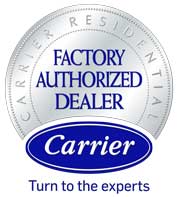In a time when health and comfort in the workplace have never been so crucial, understanding and addressing indoor air quality (IAQ) in commercial buildings should be a vital consideration for businesses. In this blog post, Superior Air discusses how this can impact health, productivity, and well-being in retail, office and other commercial and industrial settings.

The Significance of Indoor Air Quality
Indoor air quality in commercial buildings, such as offices, schools, and healthcare facilities, affects not only the comfort but also the health and productivity of the occupants. Given the considerable time people spend indoors, the presence of fresh air, controlled humidity and temperature, as well as the efficient management of pollutants from both outside and inside the building, become paramount. The Occupational Safety and Health Administration (OSHA) underscores these elements as foundational to good IAQ.
Sources and Effects of Indoor Air Pollution
Indoor air pollution significantly affects employee health and office productivity. It comes from multiple sources, including mold growth due to moisture, volatile organic compounds (VOCs) from cleaning agents, and particulate matter from carpets and upholstery. These contaminants can contribute to respiratory issues, allergic reactions, and decreased workplace productivity.
Strategies for Monitoring and Enhancing IAQ
Focusing on IAQ in commercial and industrial settings involves a few strategies that can lead to improvements in terms of the health and well-being of employees, tenants and other occupants. Strategies include:
- Regular Inspection and Maintenance of HVAC Systems. Effective ventilation is crucial for maintaining good IAQ. Also, HVAC systems must be regularly inspected and maintained. This involves cleaning filters and ducts to prevent the accumulation of pollutants and ensuring the systems are functioning optimally for proper air circulation.
- Focusing on High-Risk Areas. Certain areas within commercial buildings are more susceptible to IAQ problems due to their functions or activities carried out. For instance, manufacturing zones, waste disposal areas, and areas with high occupant density require particular attention. Implementing targeted interventions like improved ventilation and air purification in these areas can significantly enhance overall IAQ.
- Implementing Air Quality Monitoring and Control Measures. Utilizing air quality monitors can provide real-time data on the levels of various pollutants, such as PM2.5, VOCs, humidity, and temperature. This information can guide the adaptation of air quality management strategies, including adjusting ventilation rates or deploying air purifiers where necessary. Moreover, addressing specific issues like mold growth or carbon monoxide buildup with professional assessments and interventions, including regular air duct cleaning, remains critical.
- Optimizing Commercial Indoor Air Quality. Commercial establishments have a responsibility to ensure their spaces offer a healthy and comfortable environment for their occupants. By regularly assessing and addressing the factors impacting IAQ, businesses can safeguard the well-being of their employees and visitors, boost productivity, and contribute to a more sustainable and healthy indoor environment.
Maintaining optimal indoor air quality in commercial buildings is a comprehensive endeavor that encompasses everything from routine HVAC maintenance to targeted interventions in high-risk areas. Superior Air of Visalia, CA, understands the intricacies of this challenge. Our expertise in managing and improving IAQ positions us as a valuable partner for commercial property owners and facility managers aiming to enhance their indoor environment. Get in touch with us today at (559) 734-2002, or visit our contact page to schedule an appointment. We serve clients in Tulare, CA, and the surrounding communities.



